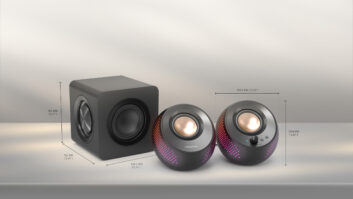“Standards, we don’t need your stinking standards.”
This is the message home networking manufacturers are giving to the world as they continue to roll out draft 802.11n products despite the fact that the standard is unlikely to be ratified anytime soon.
At press time, Paul Nikolich, IEEE 802 committee chair, told TWICE, “The current IEEE 802.11n timeline lists June 2009 as the approximate time the IEEE 802.11n standard will be finalized,” noting that the date is subject to change.
Like last year, this news does not appear to have slowed down many major players in the networking field, eager to bring the next generation of draft 802.11n products to market. The IEEE’s eventual ratification of the standard is proving to be an afterthought at best in many of these companies’ decisions to move forward with products designed using the draft 802.11n standard.
“We’re at the point where the market has adopted the standard,” Dan Kelley, marketing director for D-Link, said, noting the standard is being “pushed by both retail and vendors of 11n products.”
Steve Baker, industry analysis VP for research firm The NPD Group, said 802.11n products saw 29.3 percent of retail sales dollars in September 2007 compared to products that incorporate the 802.11g standard, which saw 70.7 percent increase.
Among industry executives and analysts interviewed for this story, there was little debate as to whether 802.11n would eventually become the dominant networking standard.
Baker said he expects the N standard to be the dominant choice for consumers by the end of 2008, “probably around the holiday season.”
Similarly, Som Pal Choudhury, product line manager for Netgear’s wireless products, said he expects N products to account for “65 to 70 percent [of the category] by the end of 2008 in terms of revenue”
Kelley’s predictions for the standard’s future weren’t quite as optimistic as Baker’s, but he still sees the standard at least becoming an equal player in the market with G products “if it continues to trend the way it has been going.”
The push towards N adoption has been largely industry-driven, Baker said, adding factors like demand, marketing and prices, which will likely get lower as more N products hit the market, will continue to drive consumers to upgrade.
“Right now there’s a pretty big premium for G devices,” he said. “Until that falls away, N will falter.”
Jonathan Bettino, business unit manager for Belkin’s networking group, voiced similar concerns regarding the 11G standard. “G won’t go away overnight,” he said. “There’s still a big cost delta between G and N.”
A key factor driving consumer adoption mentioned by many of the people interviewed is the decision by many chip makers and hardware manufacturers to implement 802.11n into more and more hardware products.
“The biggest single factor [in driving adoption of the N version of the standard] is N being built into notebooks,” said Greg Memo, Linksys’ VP/general manager, consumer business organization.
Challenges facing the standard’s adoption process, according to Baker, have been a lack of a “huge base of innovative consumers doing things that take full advantage of N,” and hesitancy on the part of consumers who already have networks set up and who recall it being difficult to set up their original networks. “The upgrade path is difficult,” he said.
Baker also said he felt more could be done on the part of manufacturers trying to market N products to consumers.
“One of the issues outstanding with N is that the industry hasn’t made a good enough argument to the consumer yet,” said Baker. He has found the marketing messages so far have been mostly limited to the advantages related to video “but aspects like a clearer signal, though not as sexy, would probably be useful to consumers.”
One company attempting to address this problem is Linksys, a division of Cisco. Linksys recently launched an international online and print ad campaign that asks the question “Where’s Your Point N?” in an attempt to teach consumers about N.
According to a Linksys spokesperson, the campaign is targeted at “computer users who want additional wireless connectivity speed to access the Web as well as to view uninterrupted video, along with those who want whole-home wireless coverage throughout their house and surrounding area.”
The spokesperson said the primary message is designed to point out to consumers that “Point N is the place you never thought a wireless router could reach.” Essentially it is designed to show consumers both the range and the increased capability that comes with upgrading to an N connection.
D-Link is also confident that its marketing message is strong. Kelley told TWICE that his company has been putting a lot of its ad dollars behind 11n and that it’s “starting to hit the point to saturation in messaging at the retail level.”
He added, “We spend a lot of money on training retailers about why 11n is good for the industry, and why D-Link in particular.”
According to Kelley, these efforts are paying off. “We saw significant growth in 11n this year, significant increases quarter-over-quarter since Q1,” he said. Kelly also mentioned that D-Link had “good consumer ratings,” and said, “We’re pleased at where we are with our 11n product lineup.”












